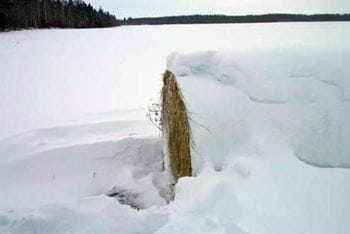Feeding Silage
In large feedlots, silage is usually distributed to the feed bunks with a mixer feed truck or a feed wagon. Loading the silage from a trench or bunker silo is accomplished with a front-end loader. The loader scrapes a slice from the silage face and loads the silage into a mixer feed truck or wagon. With a reasonable amount of care and attention, your silage losses between the silo and the animal should be less than four per cent.
With small livestock operations, self-feeding of silage is sometimes used to reduce machinery operation costs. For self-feeding, cattle require a 25 cm (10 in.) width of feeding space per head. Maximum silo height is 2.4 m (8 ft.). In winter, at least 10 cm (4 in.) should be consumed from the face of the silo each day to minimize losses (in summer, 15 cm or 6 in.). Based on 50 head consuming 34 kg (75 lb.) of 65 per cent moisture silage per day, a 12 m (40 ft.) you would remove 10 cm (4 in.) from a wide silo, 2.4 m (8 ft.) high each day. However, summer use would reduce silo height by one-third to remove 15 cm (6 in.) of silage off the surface.

Limited feeding in winter will reduce height by approximately half, as more feeding space is required per head. The decreased height means there is greater surface area relative to silo capacity; i.e., surface spoilage losses are a greater percentage of the total. Self-feeding often results in animals wasting feed. Systems based on self-feeding should be used with an understanding of the limitations of the method of feeding.
